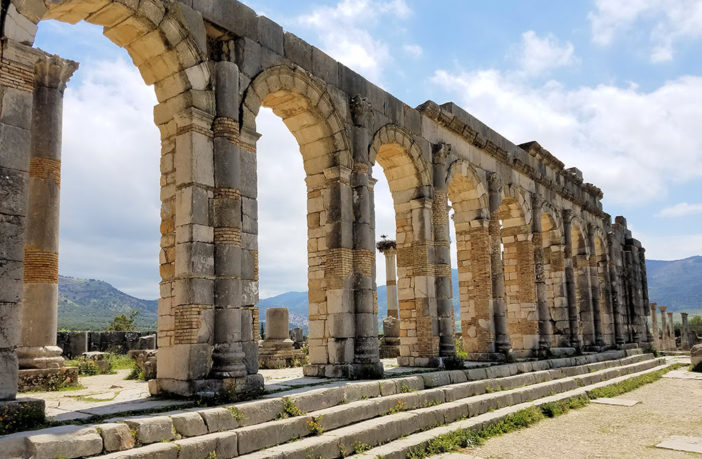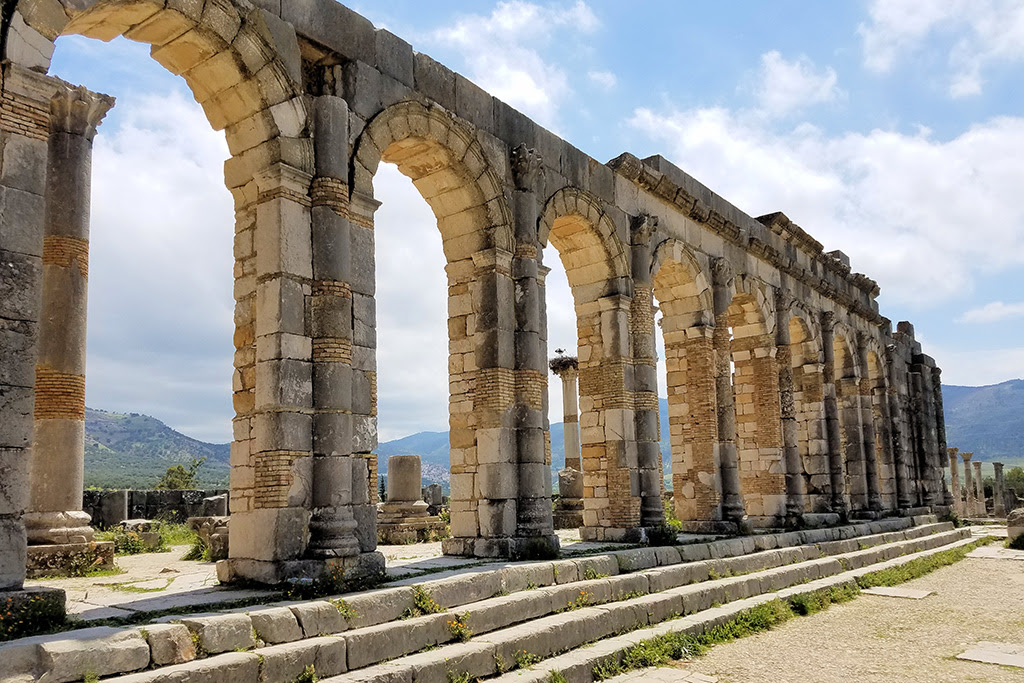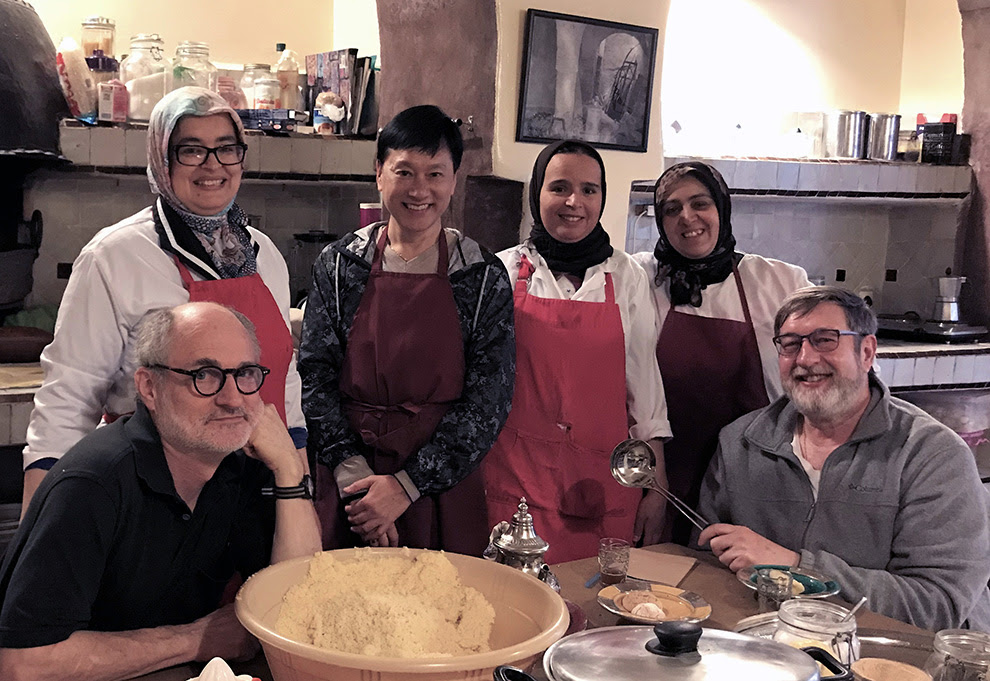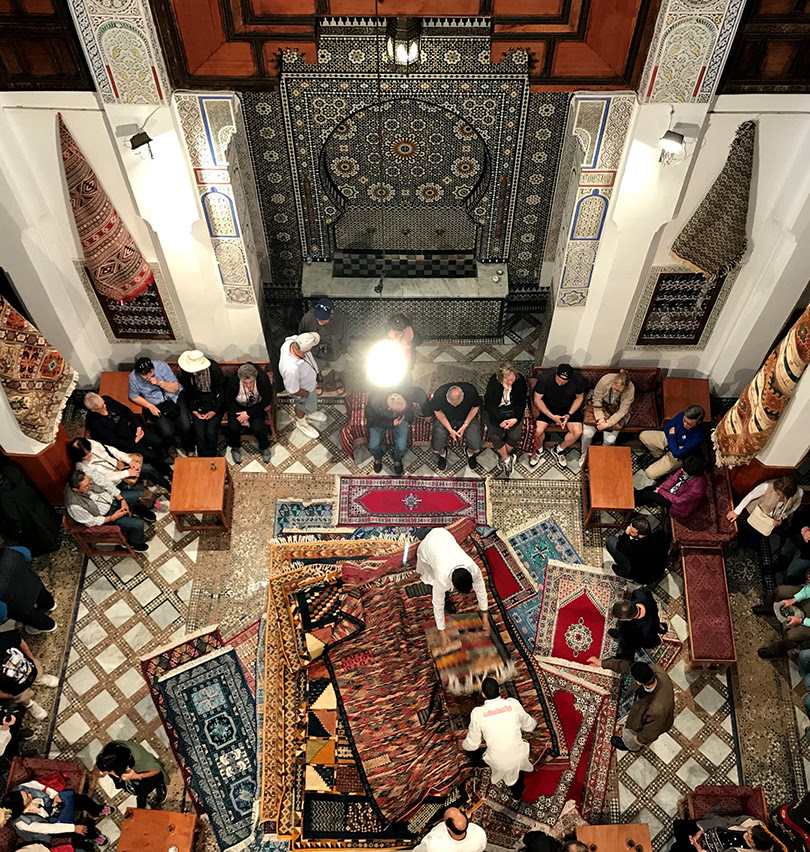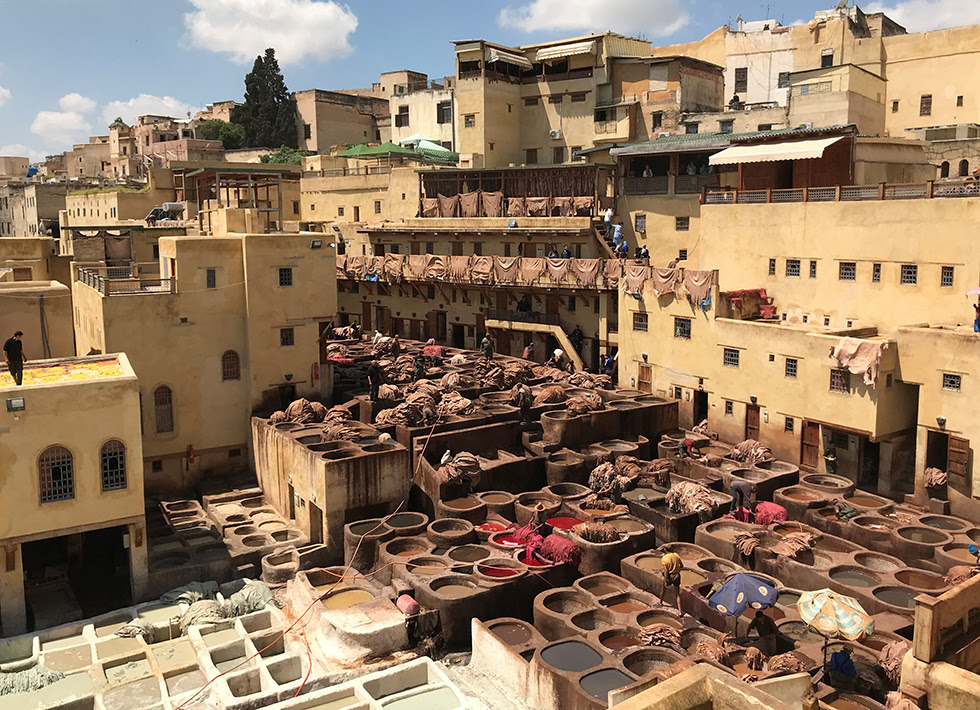Asian Weekly
By Northwest Asian Weekly
By Scott Wittet and Gary Tang
Special to the Northwest Asian Weekly
Just ahead of me, further along the dimly lit souk alleyway, the tourist — cameras dangling from his neck — was being dragged by the arm into a tiny shop. I was a young backpacker who obviously had no money, so most of the hawkers ignored me. But this other guy had to fight hard to stay out of the cubbyhole. It looked like a losing battle.
Earlier during that student trip, our little group had been accosted by a blatant pickpocket on the overnight train from Rabat, Morocco to Marrakech (he got nothing from us). Then, trudging dusty and exhausted, as we approached our hotel, we found a body lying in the middle of the street, surrounded by a crowd. We never learned what happened. For me, that first trip to the developing world was a study in contrasts — stunning geometric tile work at monumental scale, many cups of sweet and tasty mint tea, and photogenic snake charmers and fortune tellers — complemented by compulsory souvenir shopping and beggars in the street.
But that was 40 years ago. While the snakesters and tile walls are still on display, now Morocco is super safe, even easy, and has become a favorite destination of sun- and thrill-seekers from Europe, Asia, and the United States. Over 10 million people visited in 2016, and the number increases every year. A lot of the enthusiasm is the result of tourist-friendly security policies put in place by King Mohammed VI, after he ascended to the throne in 1999.
Cooking class! The pensive looking fellow is a chef from New York (Photo credit: Scott Wittet and Gary Tang)
“Tourism is very important to us — we don’t have oil reserves, so we’re doing all we can to make Morocco more comfortable for visitors. The king has assigned plainclothes police to the medina (old city) and other tourist spots — criminals know they will be punished severely for preying on foreign guests,” explained our friend Kareem. “Morocco is rich in culture; we have great food; coastal, desert, and mountain environments; and we are a diverse and hospitable people. Tell your friends not to believe everything they hear about Muslim countries. They should come to Morocco and see what we have to share!”
Our two-week visit began in Fes (sometimes spelled Fez), the ancient cultural capital of the country. While we could have stayed in a modern hotel in the “New Town” (the city built when Morocco was a French colony), we chose a more traditional Moroccan experience, staying in a restored, 400-year-old mansion in the medina. Riad Laaroussa is a beautiful example of modern comfort integrated with ancient style. It’s a small hotel, with four rooms and four suites, and like most dwellings in the medina, its entrance is unassuming, even humble. But once you pass through the doors, you’re living an Arabian dream.
Riad means “garden” in Arabic, and in Morocco, it’s used to describe a large home with a grand, central courtyard featuring a fountain and full grown lemon and orange trees (that’s the garden bit). The courtyard is surrounded by rooms on three or four levels, with massive carved and decorated wooden doors and more of that gorgeous zillij tile work and intricate plaster panels.
At the riad, the second call to prayer of the day from the nearby mosque usually punctuates breakfast, reminding us where we are. The first call is about 5 a.m. — proclaiming that “it’s better to pray than to sleep.” But since we don’t speak Arabic, it was chef Fatima’s breads, jams, coffee and fruit that got us out of bed a couple hours later. Breakfast at Riad Laaroussa is served in the rooftop garden, where you can enjoy a panoramic view of surrounding hills, studded with the crumbling dynastic tombs. One Moroccan breakfast surprise — pistachio yogurt!
Buyers in Fes have hundreds of carpets to choose from (Photo credit: Scott Wittet and Gary Tang)
The day of our arrival, on the train from Casablanca to Fes, we met a friendly, retired gentleman returning home. He warned us about bad private guides in town, and urged us to be sure to get official guides from the tourist office. Since we were arriving in the afternoon, and we wanted a walking tour the next morning, we worried that would be difficult. The helpful man thought a moment, then said, “My wife works in the tourist office and if I call her now, she can probably arrange someone for you. It will be a scholar who will focus on history, not on taking you to shops where he’ll get a commission.” It sounded good to us, so we gave him the name of our hotel.
At breakfast the next morning, we mentioned our plans to Malek, the waiter. He smiled, put up his hand, and said, “Wait, don’t tell me. His brother or mother or kid works for tourism and can find you a history guide, right?”
Yep. Do you know him?
“Don’t worry, it’ll be fine. But you should know that those guys have train passes — they ride back and forth all day fishing for tourists. Here’s what you do: when you meet your guide after breakfast, be clear that you don’t intend to go shopping, and be clear about the price of the tour.” Well, we were, and our official guide (who had left his official guide badge in his other pants that morning) was adequate. But he was not much excited about a focus on history and art, except if it was for sale.
There are a lot of interesting sites to visit in Fes, especially if you like the architecture and the over-the-top decoration. In one day, you can take in the colorful tannery (the atmosphere can be pungent, but fortunately, the wind was to our backs so we didn’t need the minty nosegays we were kindly given). In the same walking/taxi tour, you’ll see the gates of the royal palace (amazing) and the Jewish cemetery (interesting). Morocco, in the past, has been a haven for persecuted Jews, and the connections still are strong. In the afternoon, relax in the hammam, with a traditional steambath and scrub down. The riad (and plenty of other businesses) offer spa services, too.
Hides have been dyed at the Fes tannery since the 17th century (Photo credit: Scott Wittet and Gary Tang)
The architecture, rooms, and meals at the riad are unforgettable, but the real treasure there, as throughout Morocco, is the people. Friendly and informative, they are comfortable speaking in English, French, and Arabic, and always with a smile. Kareem, Badia, and their colleagues were wonderful hosts who became friends. Badia often serves meals, among her other duties (she seems to be everywhere). She is a delight, making each table feel welcome and regaling us with her friendly jokes.
The food was so good that we had dinner at the riad three evenings out of five in Fes. They prepare meals only for hotel guests, so it’s pretty much home cooking. The menu alternates daily between tagines, cous-cous, and other specialties. But if you have something particular in mind, don’t be shy. When we asked what was planned for our second dinner, Fatima, the chef, told us she had been thinking lamb cous-cous. But when we mentioned that we were curious about a Moroccan delicacy called bastilla (meat baked in a pastry shell), she quickly offered to prepare that instead. What a treat!
Fatima and Badia open the kitchen every afternoon to guests who would like to help prepare that evening’s meal. It’s an informal cooking class with lots of tasting and laughter, and it’s free.
When we interviewed Badia for this article, she had a lot to say about her country and her culture. Top of the list was the importance of helping to teach Westerners the truth about Islam, the Islam she and the vast majority of Muslims practice, a religion of tolerance and peace. It is nothing like the twisted, corrupt faith of some zealots.
Our friend said, “Don’t worry about being in a Muslim country — we are friendly people. One thing to consider, your visit will be much more rewarding if you make small efforts to respect the local culture. For example, dress conservatively in loose clothing, with your arms and legs covered, especially in the medina.
If you’d like strangers to warm to you immediately, say “salaam alaikum” (peace be with you). If you visit someone in their home, always bring a small gift for the kids (a Coke or gum or a pen). If you want to go local and eat with your hands, use only your right hand, and if you give someone something, use that hand, too.”
The riad team in Fes helped us arrange a couple of day trips, with a private car and English-speaking driver. One day, we went to Volubilis, a museum and archeological site a couple of hours away. Well preserved, Volubilis was the last Roman city north of the Sahara. The next stop was, literally, Timbuktu.
Our mistake there was not hiring one of the local guides loitering by the entrance. We wandered around on our own, got great pictures and generally enjoyed our time there, but later, I ran across photos of mosaic masterpieces we missed in our rambling. On the way home, we stopped in Meknes, the center of Morocco’s wine industry.
Another day, we explored the area around the Middle Atlas mountains, again about two hours from Fes. We had lunch in a ski resort town straight out of the Alps — the chalets in Ifrane were built by the French as vacation retreats. We also visited a 103-year-old Berber woman who lives in a cave in the middle of town, making a living showing tourists her place and sharing a cup of tea. She was very pleasant and patient with our questions.
Marrakech — the red city — feels very different from Fes, even more exotic. You can take an all-day bus or train between the two cities, or fly through Casablanca (that also takes all day). There is a stronger Berber presence there, and though the desert is far away, you can feel it. The two major attractions in town are the Big Square (Jemaa el-Fnaa) and the Majorelle Garden, most recently the Moroccan home of Yves Saint Laurent and his partner Pierre Bergé.
Walking through the Square during the day is an overwhelming experience, in a good way. There is so much going on, including real live snake charmers, music and dance troupes, juice vendors … and sheep brain vendors, too. The outdoor balcony of Café Glacier has the best views, especially during the afternoon.
Locals and tourists head to the square in the evening to eat cheap barbeque. The many family grills in the square serve more than sheep brains, but if you need to feed your inner zombie, this is the place.
There is only one way to enjoy the Majorelle Garden and attached museums — without the crowds. On the advice of our hotel owner, we arrived at 8:30 a.m. (the gardens open at eight). Even at that hour, there were other visitors, including a tour group, but we all had opportunities to peacefully enjoy the plants, trees, ponds, birds, and frogs. Two hours later — as we were leaving — the ticket lines were stretched down the block. Crowds also were a challenge when we visited the Bahia Palace later that day. One had to move with the flow or be trampled. But our hotel recommended an exhibition at the Queen Mother’s palace (Dar el Bacha). Her home normally is not open to the public, but for a limited time, the exhibition — focusing on shared culture between Islam, Judaism, and Christianity — was open, so we could visit. It was the most beautifully decorated palace we had seen, and we were delighted to be among the few visitors that afternoon. We broke up our week in Marrakech by slipping away to the High Atlas mountains for a few days. The first night, we stayed in a modern building inspired by the ancient kasbah forts in the region, built high on a ridge — very dramatic!
During our two weeks in the country, we were pleased to find that the challenging Morocco I remembered from the 1970s has morphed into a traveler-friendly, fascinating, breathtaking, and mysterious experience.
If you like cross-cultural interchange, exotic locales, and delicious cuisine, consider taking some time to live the Moroccan dream.




